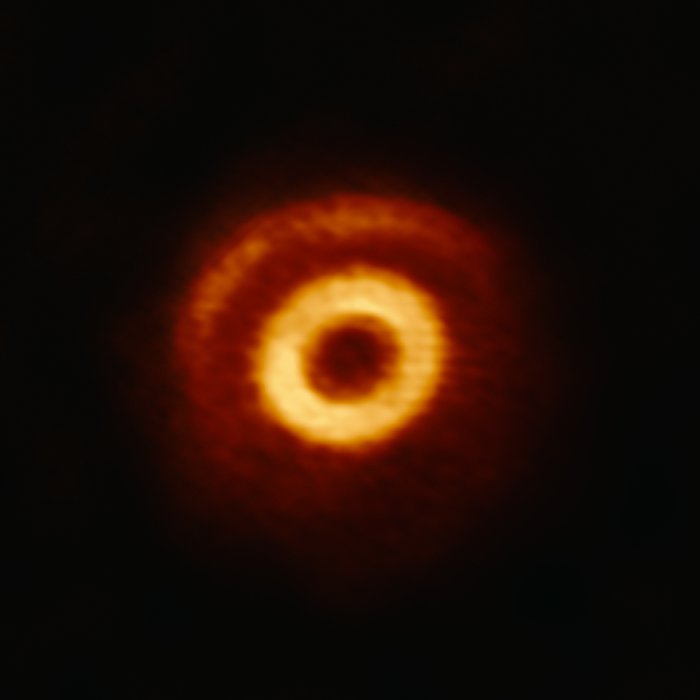Caught in a Dust Trap
This image from the Atacama Large Millimeter/submillimeter Array (ALMA) shows V1247 Orionis, a young, hot star surrounded by a dynamic ring of gas and dust, known as a circumstellar disc. This disc can be seen here in two parts: a clearly defined central ring of matter and a more delicate crescent structure located further out.
The region between the ring and crescent, visible as a dark strip, is thought to be caused by a young planet carving its way through the disc. As the planet orbits around its parent star, its motion creates areas of high pressure on either side of its path, similar to how a ship creates bow waves as it cuts through water. These areas of high pressure could become protective barriers around sites of planet formation; dust particles are trapped within them for millions of years, allowing them the time and space to clump together and grow.
The exquisite resolution of ALMA allows astronomers to study the intricate structure of such a dust trapping vortex for the first time. The image reveals not only the crescent-shaped dust trap at the outer edge of the dark strip, but also regions of excess dust within the ring, possibly indicating a second dust trap that formed inside of the potential planet’s orbit. This confirms the predictions of earlier computer simulations.
Dust trapping is one potential solution to a major stumbling block in current theories of how planets form, which predicts that particles should drift into the central star and be destroyed before they have time to grow to planetesimal sizes (the radial drift problem).
Links
Credit:ALMA (ESO/NAOJ/NRAO)/S. Kraus (University of Exeter, UK)
About the Image
| Id: | potw1742a |
| Type: | Observation |
| Release date: | 16 October 2017, 06:00 |
| Size: | 2000 x 2000 px |
About the Object
| Name: | V1247 Orionis |
| Type: | Milky Way : Star : Circumstellar Material : Disk : Protoplanetary |
| Constellation: | Orion |
| Category: | Stars |
Wallpapers
Coordinates
| Position (RA): | 5 38 5.25 |
| Position (Dec): | -1° 15' 21.70" |
| Field of view: | 0.03 x 0.03 arcminutes |
| Orientation: | North is -0.0° left of vertical |
Colours & filters
| Band | Wavelength | Telescope |
|---|---|---|
| Millimeter H | 870 μm | Atacama Large Millimeter/submillimeter Array Band 7 |

